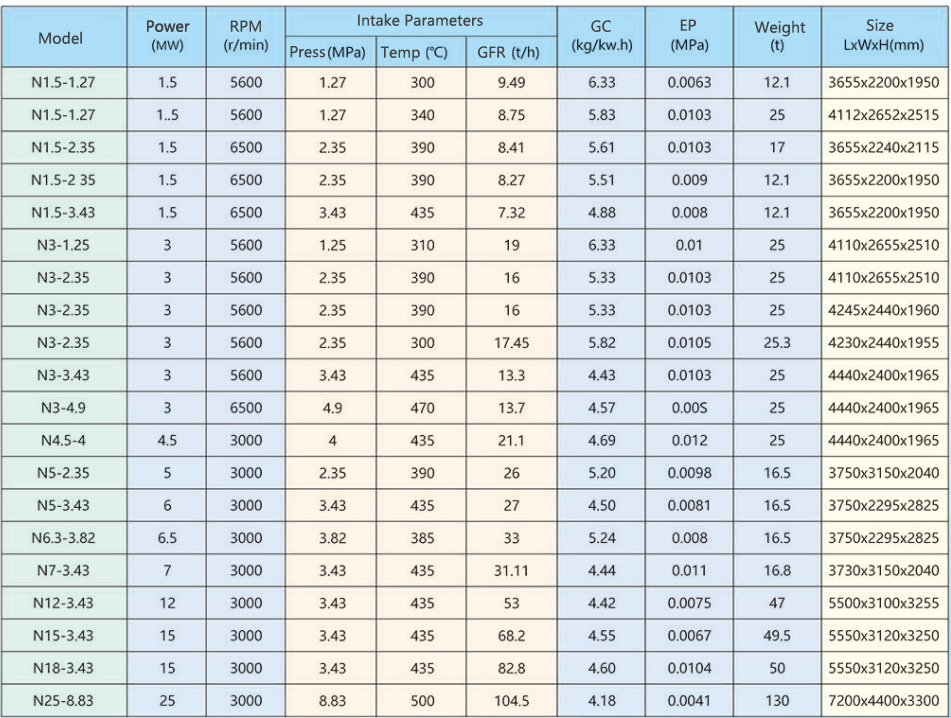

Condensing steam turbines refer to turbines where steam, after expanding and performing work within the turbine, enters the condenser to condense into water, with only a small portion escaping through shaft seals. The condensing equipment primarily consists of the condenser, circulating water pump, condensate pump, and ejector. Exhaust steam from the turbine enters the condenser, where it is cooled by circulating water and condensed into liquid water. This condensate is pumped out by the condensate pump, heated through multiple stages of heaters, and then fed back to the boiler as feedwater. During condensation within the condenser, the steam's volume rapidly contracts, creating a vacuum in the previously steam-filled enclosed space. This reduces the turbine's exhaust pressure, increasing the ideal enthalpy drop of the steam and thereby enhancing the plant's thermal efficiency. Non-condensable gases (primarily air) in the exhaust steam are extracted by the ejector to maintain the required vacuum level.
Condensing steam turbines refer to turbines where steam, after expanding and performing work within the turbine, enters the condenser to condense into water, with only a small portion escaping through shaft seals. The condensing equipment primarily consists of the condenser, circulating water pump, condensate pump, and ejector. Exhaust steam from the turbine enters the condenser, where it is cooled by circulating water and condensed into liquid water. This condensate is pumped out by the condensate pump, heated through multiple stages of heaters, and then fed back to the boiler as feedwater. During condensation within the condenser, the steam's volume rapidly contracts, creating a vacuum in the previously steam-filled enclosed space. This reduces the turbine's exhaust pressure, increasing the ideal enthalpy drop of the steam and thereby enhancing the plant's thermal efficiency. Non-condensable gases (primarily air) in the exhaust steam are extracted by the ejector to maintain the required vacuum level.
Performance Characteristics:
Condensing steam turbine units are multi-stage condensing turbines featuring high steam cycle utilization. They can extract steam for industrial processes or heating systems. The turbine exhaust enters the condenser, where it condenses into water, is recovered, reheated, and returned to the boiler for reuse. The turbine exhaust pressure is below atmospheric pressure. Operating safely and reliably, it is widely applied across multiple industries including thermal power generation, petroleum, chemical processing, printing and dyeing, textiles, cement, sugar refining, and papermaking.
Structure: Quick-assembly double-support impulse multi-stage small steam turbine
Layout: Single-deck or double-deck
Speed Control System: American Company 505 digital governor, German electro-hydraulic converter, hydraulic actuator manufactured with Siemens technology
Overspeed Protection: Dual mechanical fly-hammer type with electromagnetic valve and electronic intelligent control
Steam Seal Type: Stainless steel labyrinth steam seal
Main Steam Valve: Integrated automatic main steam valve (combination regulating valve)
Main shaft assembly: Redundant-speed stage rotor blades, interference fit between rotor and rotor blades, blades in embedded configuration
Lubrication system: Forced oil lubrication with oil tank, thin oil station, and cooler
Thermal expansion compensation: Sliding thermal compensation for front bearing support
Electrical configuration: Complete set of electrical control cabinets, protection cabinets, main control cabinets, paired with Siemens generator
Cranking device: Electric cranking
